Key Takeaways
- Understanding the cultural symbolism of colors in ancient Chinese fashion
- The impact of natural dyes and fabric selection
- Why color palettes have shifted over different Chinese dynasties
- The practical considerations behind color choices in ancient China
- Styling tips inspired by ancient Chinese fashion trends
- How to incorporate traditional Chinese colors into modern-day outfits
- The spiritual meaning of certain colors and patterns in ancient Chinese garments
- Why studying ancient Chinese fashion can give insight into contemporary fashion trends
Unveiling the Color Secrets of Ancient Chinese Fashion is like stepping back in time to explore the visual tapestry of a long-lost world. A sartorial odyssey that travels through colors, patterns, and materials, we’re here to examine how color played a pivotal role in shaping fashion throughout China’s rich history. Whether you’re a fashion historian, a style enthusiast, or someone who simply loves the aesthetic of ancient Chinese art and apparel, you’re in for a vibrant ride.
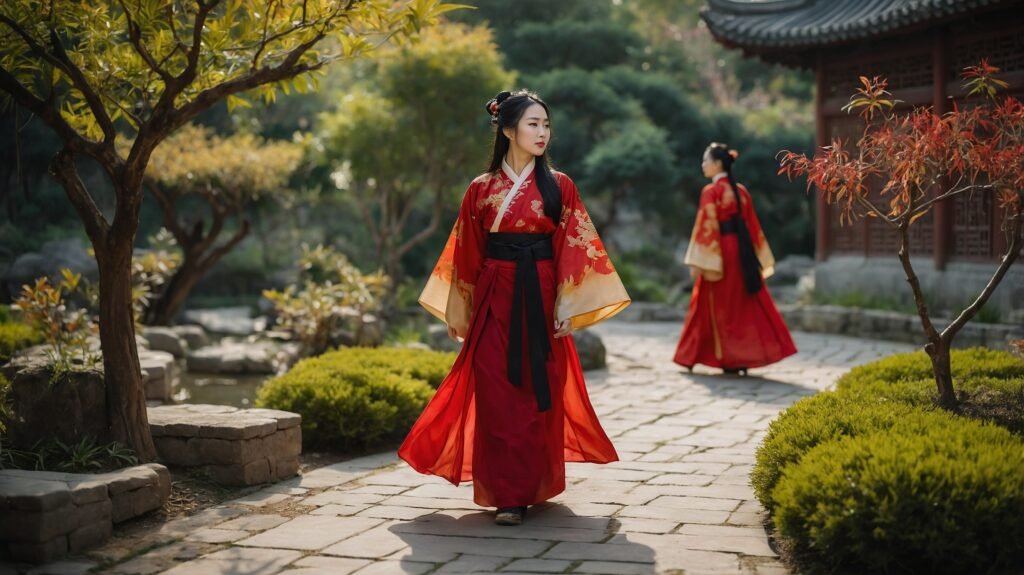
Cultural Symbolism of Colors
In ancient Chinese fashion, colors held deep symbolic meaning and were far more than simple design choices. Each color in traditional Chinese clothing represented specific aspects such as social status, age, and moral virtue, reflecting the importance of color symbolism in Chinese culture.
The Imperial Yellow
Imperial yellow was a distinctive color reserved exclusively for the emperor of China and his immediate family. This iconic hue was regarded as celestial, symbolizing the center of the universe, and was closely linked to virtues such as wisdom and power in Chinese culture. Imperial yellow was prominently featured in royal garments, traditional robes, and throughout the Forbidden City, the historic palace where the emperor lived.
Red for Happiness
Red is a significant color in Chinese culture, playing a vital role not only in ancient Chinese clothing but also in many traditional customs and celebrations. Symbolizing happiness, prosperity, and good fortune, red has long been used in traditional Chinese weddings and festive events. Today, red remains an essential color during Chinese New Year festivities and modern wedding ceremonies, reflecting its enduring importance in Chinese traditions.
Green, Blue, and Beyond
Other colors like green, blue, and black had their places in ancient Chinese fashion as well. Green symbolized growth and harmony, blue was associated with immortality, and black represented water, one of the five elements in traditional Chinese philosophy. Each color was chosen carefully, with the wearer’s age, status, and occasion in mind.
The Nature of Dyes
One can’t talk about the colors in ancient Chinese fashion without delving into the sources of these hues. Natural dyes played an immense role in creating vibrant garments.
Plants and Minerals
From the indigo plant to cinnabar, various natural elements were used to derive colors. The methods were so refined that they often resulted in shades that were not only visually appealing but also long-lasting. These traditional dyeing techniques are still practiced in some parts of China and are considered highly sustainable.
Seasonal Color Schemes
In ancient China, the choice of color also depended on the seasons. Light colors like whites and pale greens were popular during the summer months, while darker shades like blues and blacks were reserved for winter. This seasonal rotation was not merely about aesthetics; it was also about practicality. Light colors reflect sunlight, making them cooler for summer wear, whereas dark colors absorb heat, providing warmth in winter.
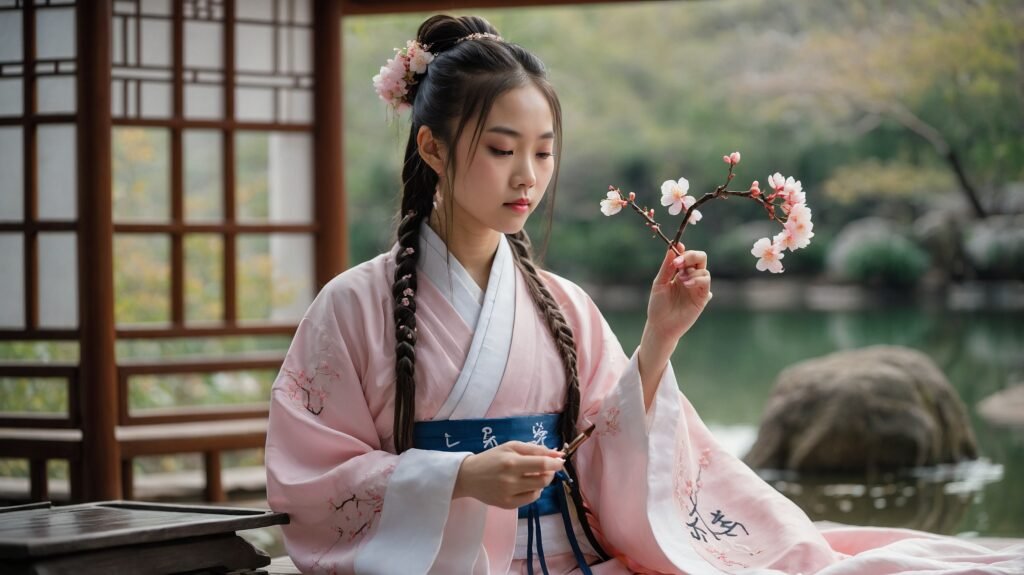
The Stylish Dynasty Palette
Chinese fashion history is often divided by its dynasties, each with its own set of sartorial rules and color palettes.
- Qin Dynasty: Simplicity with unbleached linens
- Han Dynasty: Introduction of silk and vibrant dyes
- Tang Dynasty: Eclectic and cosmopolitan styles
- Song Dynasty: Understated elegance with darker hues
- Ming Dynasty: Rich patterns with gold and silver threads
- Qing Dynasty: Detailed embroidery and diverse color schemes
Each dynasty left its mark on how colors were perceived and incorporated into fashion, making the story of ancient Chinese clothing a tale of constant evolution.
Modern Interpretations
As much as we adore the past, the beauty of fashion is in its ability to adapt and evolve. Modern-day fashion designers often turn to ancient Chinese palettes for inspiration, infusing traditional hues into contemporary styles.
Streetwear Meets History
One of the more interesting trends is the fusion of ancient Chinese colors with modern streetwear. Imagine wearing a hoodie inspired by imperial yellow or a pair of sneakers that incorporate the classic red and gold. It’s a unique way to pay homage to history while staying utterly current.
Luxury With a Cultural Twist
High-end designers are also delving into the rich history of Chinese colors. Limited edition handbags, dresses, and even watches come out in shades reminiscent of the Ming or Tang Dynasties, offering consumers a taste of history and luxury combined.
Everyday Wear
You don’t have to wait for a special occasion to incorporate ancient Chinese colors into your outfit. From scarves and belts to casual tees and skirts, there are endless ways to bring a touch of historical chic to your everyday attire.
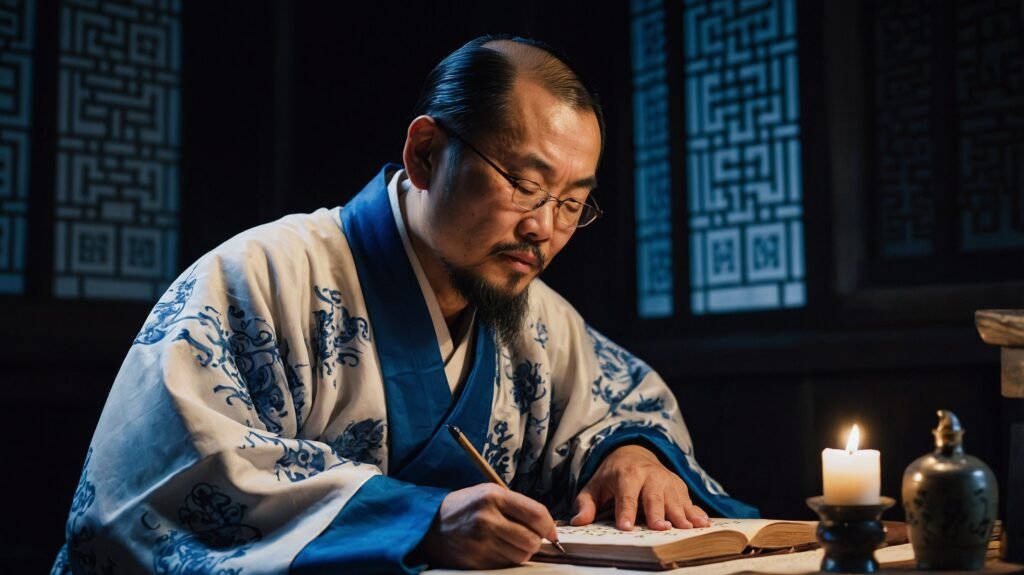
Spirituality and Fashion
Colors in ancient Chinese clothing were deeply connected to the spiritual beliefs of the time. From Taoist concepts of balance to Buddhist notions of purity, spirituality was woven into the fabric of Chinese fashion.
Yin and Yang
In Chinese philosophy, the concept of Yin and Yang symbolizes balance. This was often represented through color combinations in clothing. For example, a black robe might be adorned with white embroidery, capturing the essence of cosmic duality.
Colors for Rituals
Certain rituals and ceremonies had strict color codes. Blue, representing Heaven, and yellow, symbolizing Earth, were often combined in garments worn during spiritual ceremonies. The harmonious interplay of these colors symbolized a cosmic balance, crucial to the rituals performed.
Sacred Geometry and Patterns
Beyond colors, ancient Chinese garments were often adorned with patterns that held spiritual significance. These could range from dragons and phoenixes to simpler geometric shapes, each carrying its own symbolic weight.
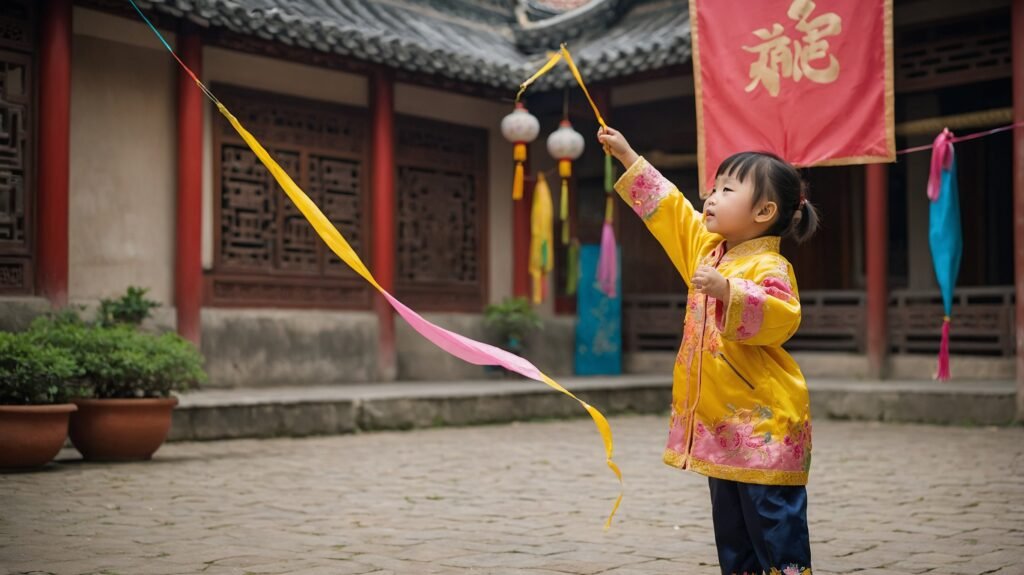
Your Ancient Chinese Fashion-Inspired Wardrobe
Creating an ancient Chinese fashion-inspired wardrobe isn’t just about choosing the right colors; it’s also about understanding their historical and cultural significance. Here are some quick tips to get you started:
- Start with Basics: Invest in key pieces in classic colors like red, yellow, and black.
- Layer Smartly: Combine different colors to represent concepts like Yin and Yang.
- Choose the Right Material: Silk and brocade give a more authentic look.
- Add Accessories: Think jade jewelry, intricate belts, or embroidered shoes.
- Be Mindful of Patterns: Opt for geometric patterns or traditional Chinese symbols.
- Mix and Match: Don’t be afraid to combine modern and traditional elements.
- Event-Focused: Choose your colors based on the occasion, just like in ancient times.
- Experiment: Use modern fashion staples like jeans or t-shirts as a canvas for ancient Chinese colors.
- Footwear: Embroidered slippers or colorful sandals can add an extra layer of authenticity.
- Don’t Overdo It: Sometimes less is more. One or two ancient Chinese elements can make a statement.
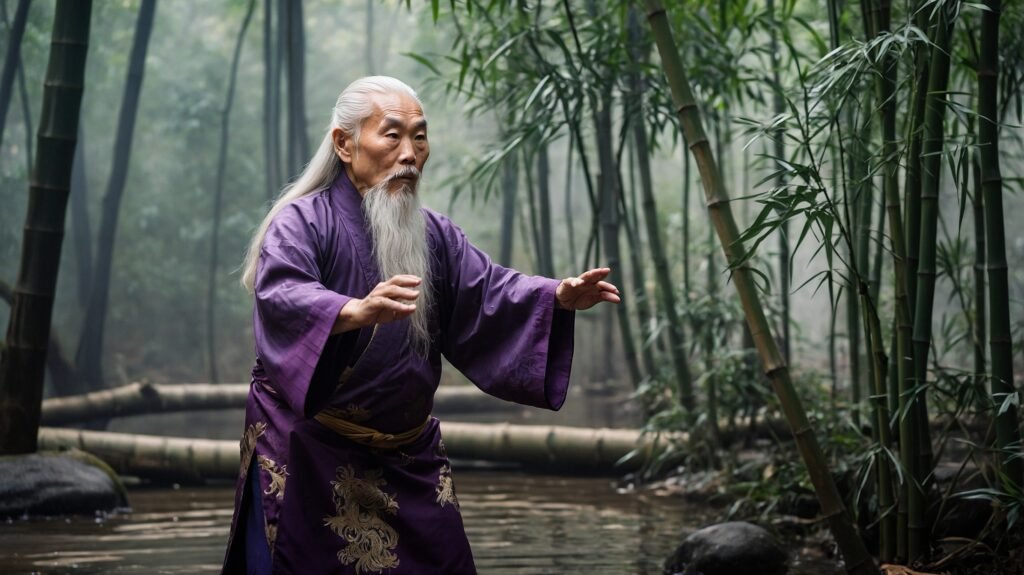
Harmony of the Hues
Taking fashion cues from ancient Chinese wardrobes involves more than just adopting specific colors; it’s about understanding the harmonious balance between them.
Complementary Colors in Fashion
In ancient Chinese fashion, the play of complementary colors was crucial. For example, a deep red robe might be offset by a jade green belt, creating a visual contrast that was deeply symbolic. This concept is essential for modern fashionistas too. Complementary colors, when used wisely, can create outfits that are pleasing to the eye and emotionally impactful.
The Yin and Yang of Color Theory
In Chinese culture, the concept of Yin and Yang is essential. It’s all about balancing opposites. In the color spectrum, this could mean pairing light shades with dark shades, or warm colors with cool ones. For instance, if you’re wearing a pale yellow blouse, consider pairing it with a navy-blue skirt. This not only creates an aesthetic balance but also reflects the ancient cultural importance of equilibrium.
Modern Applications of Ancient Color Schemes
Today’s fashion world has embraced these ancient color traditions in various ways. From couture collections to street style, the emphasis on color balance and symbolic meaning remains relevant. Whether it’s a simple red scarf adding energy to a basic black outfit, or a turquoise pendant lending calm to a fiery ensemble, the modern fashion scene continues to mirror these ancient practices.
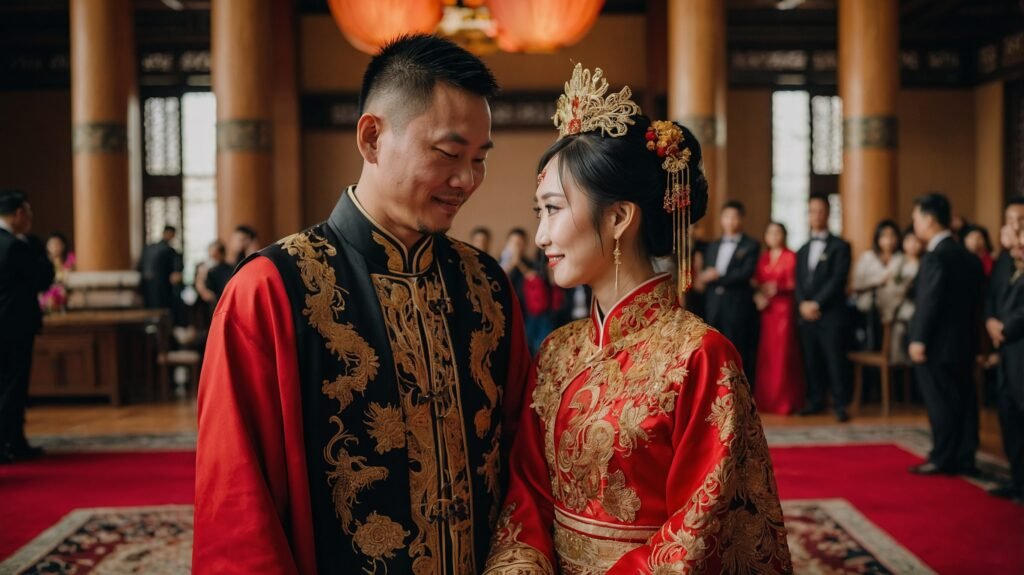
Chinese Color Aesthetics in Today’s World
The world of fashion is perpetually evolving, yet the influence of ancient Chinese color aesthetics is hard to overlook. Even today, the rich and symbolic use of color can be seen in collections worldwide.
The Revival of Traditional Colors
There’s been a renewed interest in the colors and fabrics traditionally associated with ancient China. Luxury fashion brands are incorporating silks and brocades in vibrant shades of red, gold, and green, offering a contemporary twist on these timeless elements.
Cultural Fusion in Fashion
More than ever, the lines between different cultural styles are blurring. Designers are marrying elements of ancient Chinese aesthetics with modern Western styles. This manifests in an exciting fusion of colors, where the traditional and the modern coalesce in unexpected ways.
Color Forecasting and Ancient Influence
Fashion houses and color experts often delve into history for inspiration. Ancient Chinese color palettes have featured in numerous seasonal color forecasts, proving their timeless appeal. So don’t be surprised if you see more jade greens and imperial yellows in future collections.
Trendy Tones Inspired by the Past
Ancient Chinese fashion isn’t just a history lesson; it’s a living, breathing source of inspiration. These colors are now making waves in the fashion scene, from the runways to the streets.
- Saffron: A vivid form of yellow or orange
- Vermilion: A brilliant red or scarlet
- Teal: A medium to dark greenish blue
- Oxblood: A deep, rich shade of burgundy
- Lavender: A soft, pale shade of purple
- Rose Quartz: A light shade of pink
- Lapis Blue: A bright shade of azure
- Cinnabar: A red mineral, often mimicked as a color
- Jade: A shade of green resembling the precious stone
- Bamboo: A light, creamy form of green
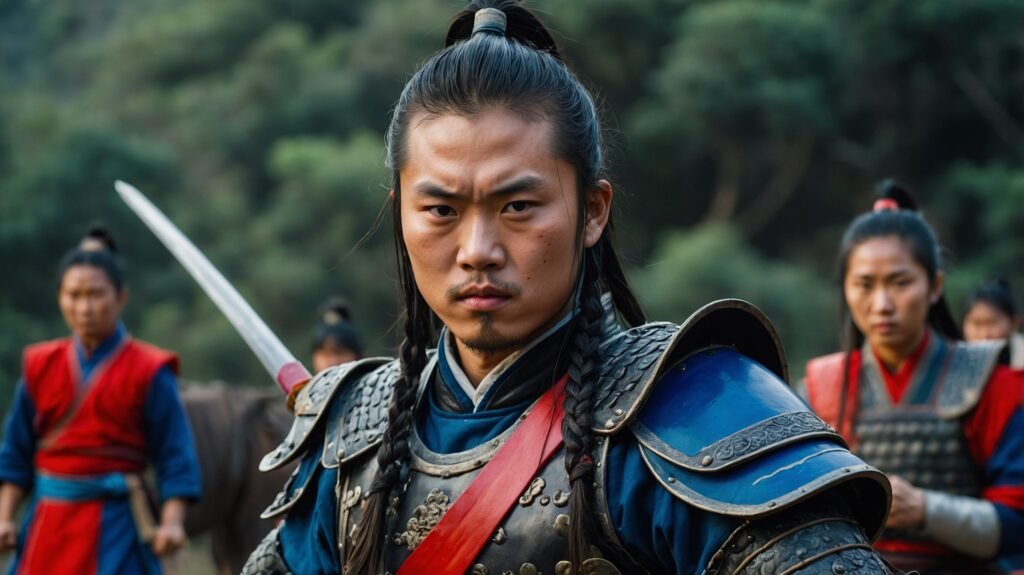
The Color Wheel of Ancient Chinese Fashion
Understanding the color wheel can help in replicating the complex palettes seen in ancient Chinese fashion. The hues that once graced the palaces of emperors and empresses can now illuminate your wardrobe.
Primary Colors and Their Significance
Red, yellow, and blue, the primary colors, have special significance in Chinese culture and fashion. Red signifies good luck and joy, yellow stands for neutrality and good fortune, and blue represents immortality and advancement.
The Role of Secondary and Tertiary Colors
Colors like orange, green, and violet, which are derived from combining primary colors, also have their unique meanings and usages. Green, a blend of yellow and blue, symbolizes growth and harmony. The importance of these colors may vary but each has its place in fashion.
Colors that Transcend Boundaries
Certain colors have a universal appeal, irrespective of culture or time. For instance, white often stands for purity, while black denotes authority and power. These colors, though not unique to Chinese culture, were skillfully employed in ancient Chinese fashion and continue to be relevant today.
The Personal Palette
Choosing colors that resonate with you personally can add another layer to your fashion story.
Finding Your Go-To Colors
Your skin tone, hair color, and even your eye color can influence how certain hues look on you. By understanding your own coloring, you can choose shades that enhance your natural beauty.
Emotional Impact of Colors
Colors can also affect your mood and confidence level. For instance, you might find that wearing red makes you feel more energetic and assertive, while blues and greens make you feel calmer and more composed.
The Rule of Three in Fashion
Many fashion experts recommend using a maximum of three main colors in an outfit. This creates visual interest without overwhelming the eye. Of course, this is a guideline rather than a rule, but it’s a good starting point for fashion experimentation.

Seasonal Shades and Sustainability
As you journey through the year, different seasons call for different shades. But how do you make sustainable choices in an ever-changing fashion landscape?
Seasonal Color Variations
Each season offers its own palette of colors. Spring might beckon with soft pastels, while autumn calls for deep, rich tones. By tuning into these natural rhythms, you can keep your wardrobe fresh and relevant.
Sustainable Color Choices
Sustainability is now a buzzword in the fashion industry. Choosing timeless colors that can be worn year-round is a smart, eco-friendly decision. Focus on quality over quantity, selecting pieces that are versatile and enduring.
DIY Fashion: A Splash of Color
If you’re crafty, consider adding pops of color to your existing wardrobe. This could mean anything from adding colorful embroidery to a basic black dress or dyeing a faded shirt to give it new life.

A Tapestry of Color
Unveiling the color secrets of ancient Chinese fashion is more than an exercise in historical exploration; it’s a treasure trove of inspiration for today’s fashion enthusiasts. From understanding the deep cultural symbolism to making informed and sustainable color choices, this ancient wisdom continues to influence our modern sartorial choices in fascinating ways.
A Palette of Ancient Chinese Colors and Their Modern Interpretations
| Ancient Chinese Color | Symbolic Meaning | Modern Fashion Application | Best Seasons to Wear |
|---|---|---|---|
| Red | Joy, Good Luck | Adds energy to neutral outfits | Winter, Festivals |
| Yellow | Neutrality, Good Fortune | Statement pieces, accessories | Spring, Summer |
| Blue | Immortality, Advancement | Formal wear, business attire | All Year |
| Green | Growth, Harmony | Casual wear, Spring collections | Spring, Summer |
| Gold | Wealth, Prosperity | Evening wear, special occasions | Fall, Winter |
| Jade | Purity, Serenity | Jewelry, accent pieces | All Year |
| Black | Power, Authority | Business attire, formal events | All Year |
| White | Purity, Innocence | Summer outfits, casual wear | Summer, Spring |
| Oxblood | Richness, Depth | Fall collections, boots, bags | Fall, Winter |
| Lavender | Calm, Femininity | Summer dresses, casual wear | Spring, Summer |
Conclusion
The colors that adorned the wardrobes of ancient Chinese royalty and commoners alike weren’t just random selections; they were the outcomes of deeply rooted beliefs and cultural practices that stretch back thousands of years. Today, as fashion continues to evolve, the wisdom encapsulated in these color choices remains invaluable.
Embracing the balance, symbolism, and beauty of these colors can enrich your fashion experience and add a nuanced understanding of how colors communicate beyond just aesthetics.
Whether you’re influenced by cultural traditions, your personal palette, or seasonal rhythms, the insights from ancient Chinese color philosophy can be your guide in crafting a wardrobe that is both fashionable and meaningful.
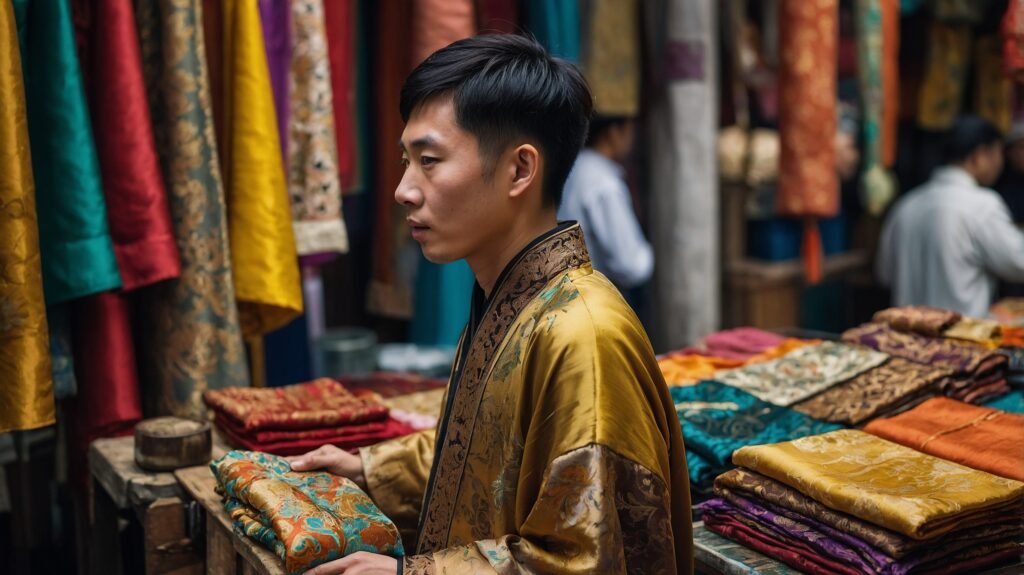
Frequently Asked Questions
What are the primary colors in ancient Chinese fashion?
In ancient Chinese culture and fashion, red, yellow, and blue hold primary positions. Red signifies joy and good luck, yellow represents neutrality and good fortune, and blue stands for immortality and advancement.
How can I apply ancient Chinese color theory to modern fashion?
Consider balance and contrast. Pair complementary colors or try the yin-yang approach of matching light shades with dark shades. The primary focus should be on creating visually pleasing and emotionally impactful outfits.
Is the significance of color universal across cultures?
No, the symbolism of colors can vary widely across different cultures. For example, while white is often associated with purity in many cultures, in some Asian cultures, it is the color of mourning.
Can I wear these colors all year round?
Certain colors are more appropriate for different seasons. For instance, lighter colors like pastels are often reserved for spring and summer, while darker shades are more suited for fall and winter.
What’s the importance of fabric in color choices?
The fabric can influence how a color looks and feels. Luxurious fabrics like silk and brocade can make colors appear richer and more vibrant.
How does my personal coloring affect my fashion choices?
Your skin tone, hair color, and eye color can all impact how certain colors look on you. For example, warmer skin tones might pair well with earthy shades, while cooler skin tones might look better in jewel tones.
What are some modern fashion trends influenced by ancient Chinese colors?
Modern fashion often sees a revival of traditional colors, especially in luxury brands. Additionally, the fusion of traditional Chinese aesthetics with Western styles is a current trend.
Are there any rules for mixing and matching colors in an outfit?
While there are no strict rules, a common guideline is to use a maximum of three main colors in an outfit to maintain balance and visual interest.
How can I make sustainable color choices in fashion?
Opt for versatile, timeless colors that can be worn in multiple settings and across seasons. Investing in quality pieces that last is also a sustainable choice.
Can I add colors to my existing wardrobe without buying new clothes?
Absolutely! Consider DIY techniques like embroidery or dyeing to add pops of color to your existing pieces. You can also accessorize wisely to bring in new shades without a complete wardrobe overhaul.

Sam Goldman, with his intuitive grasp on the art of color selection, navigates the vibrant tapestry of fashion shades, ensuring each ensemble reflects the pulse of modern trends. His knack for crafting unique yet cohesive color combinations unravels the complexities of the fashion spectrum. Beyond being a mere sentinel, Sam’s dedication transforms every reader’s wardrobe journey into a harmonious blend of contemporary elegance and timeless allure. Dive into his writings and emerge with a refreshed perspective on fashion colors.
Reviewed By: Joanna Perez and Anna West
Edited By: Lenny Terra
Fact Checked By: Matthew Mansour
Photos Taken or Curated By: Matthew Mansour

